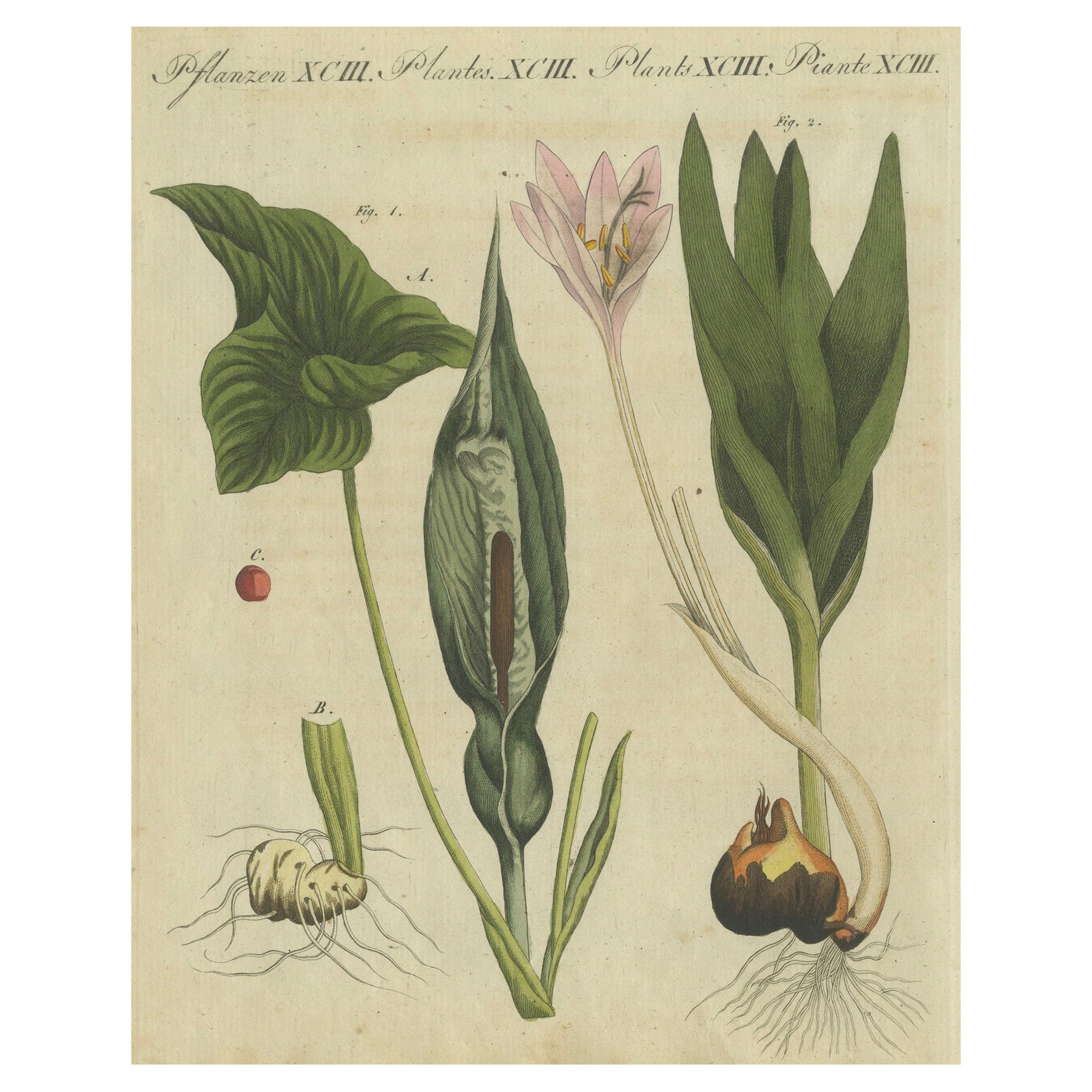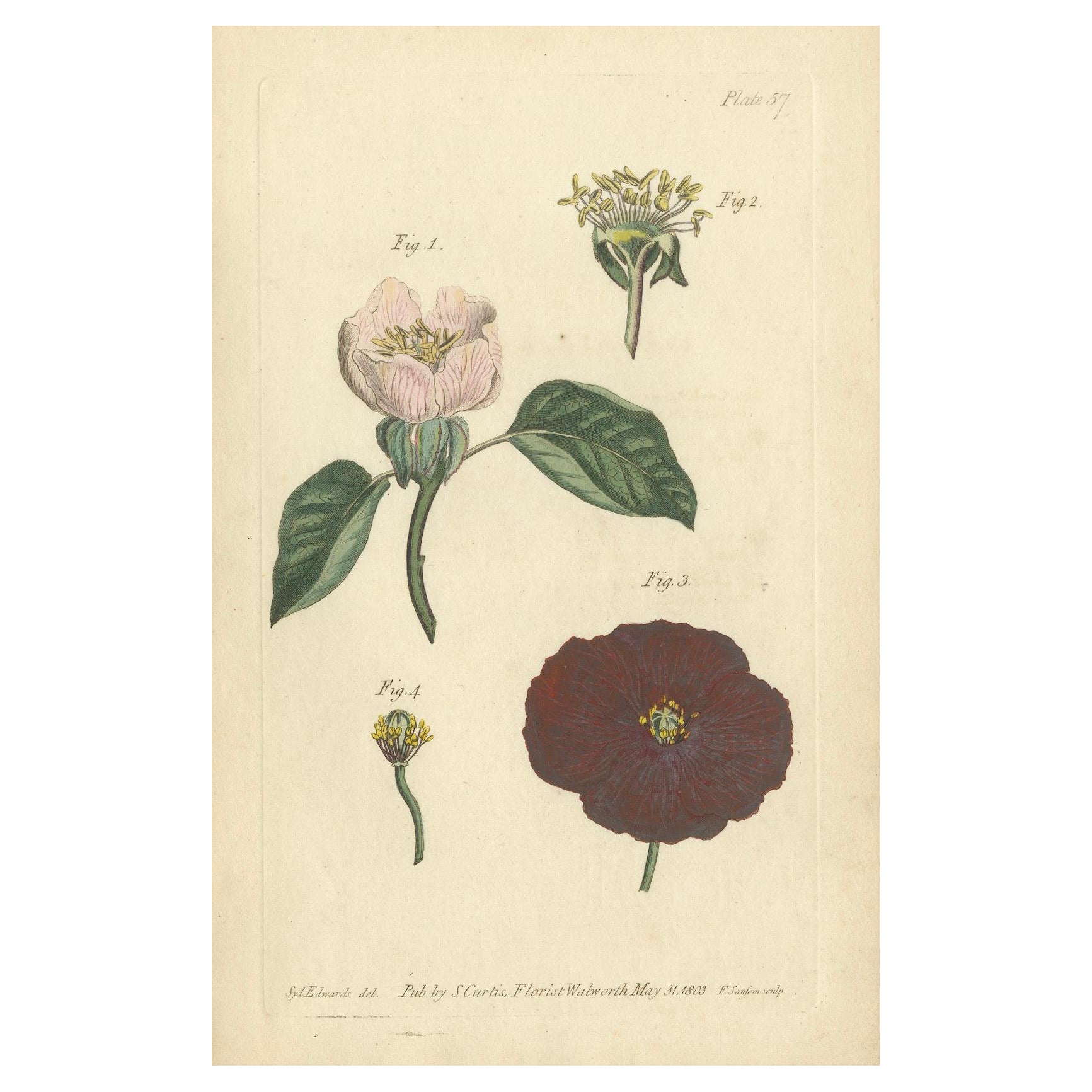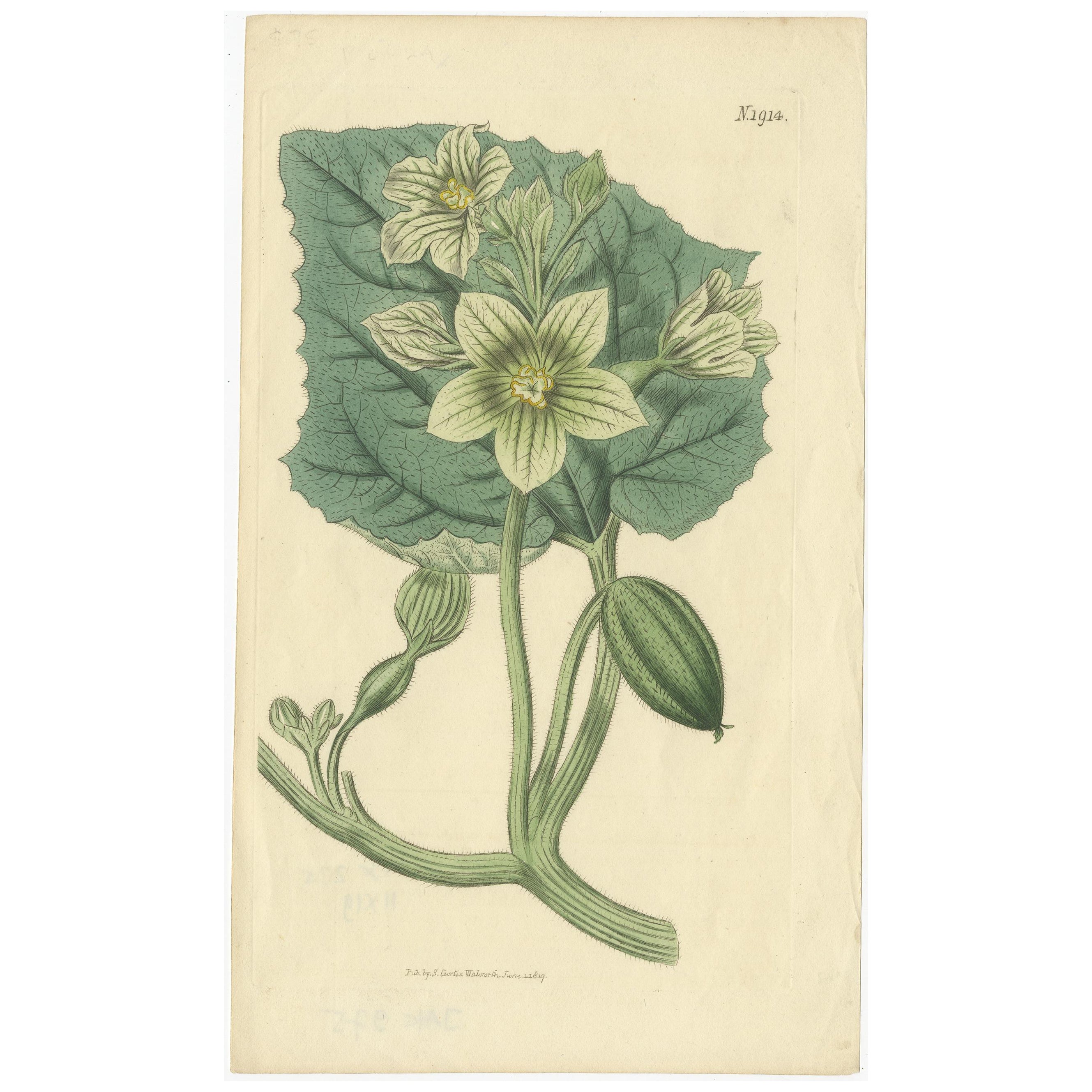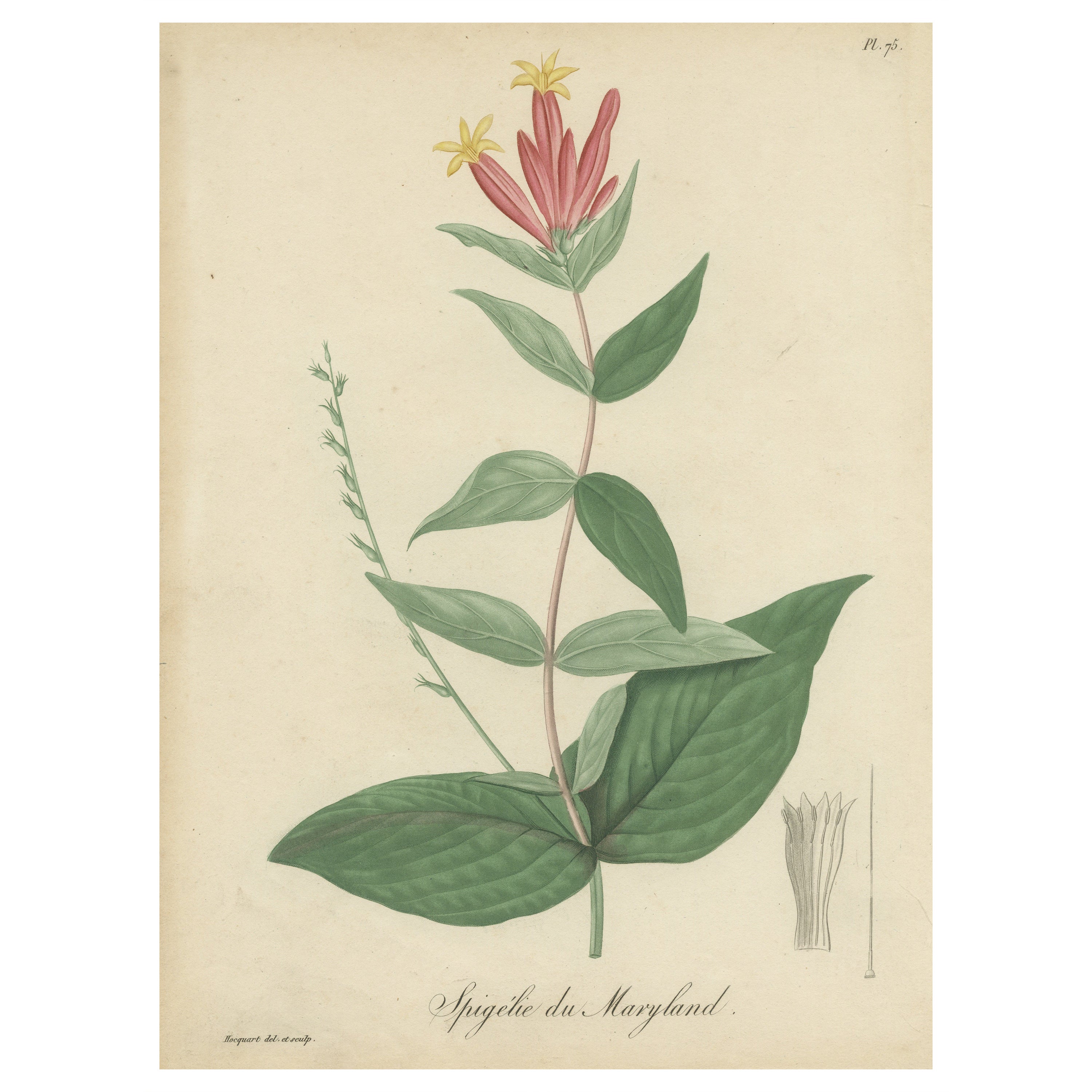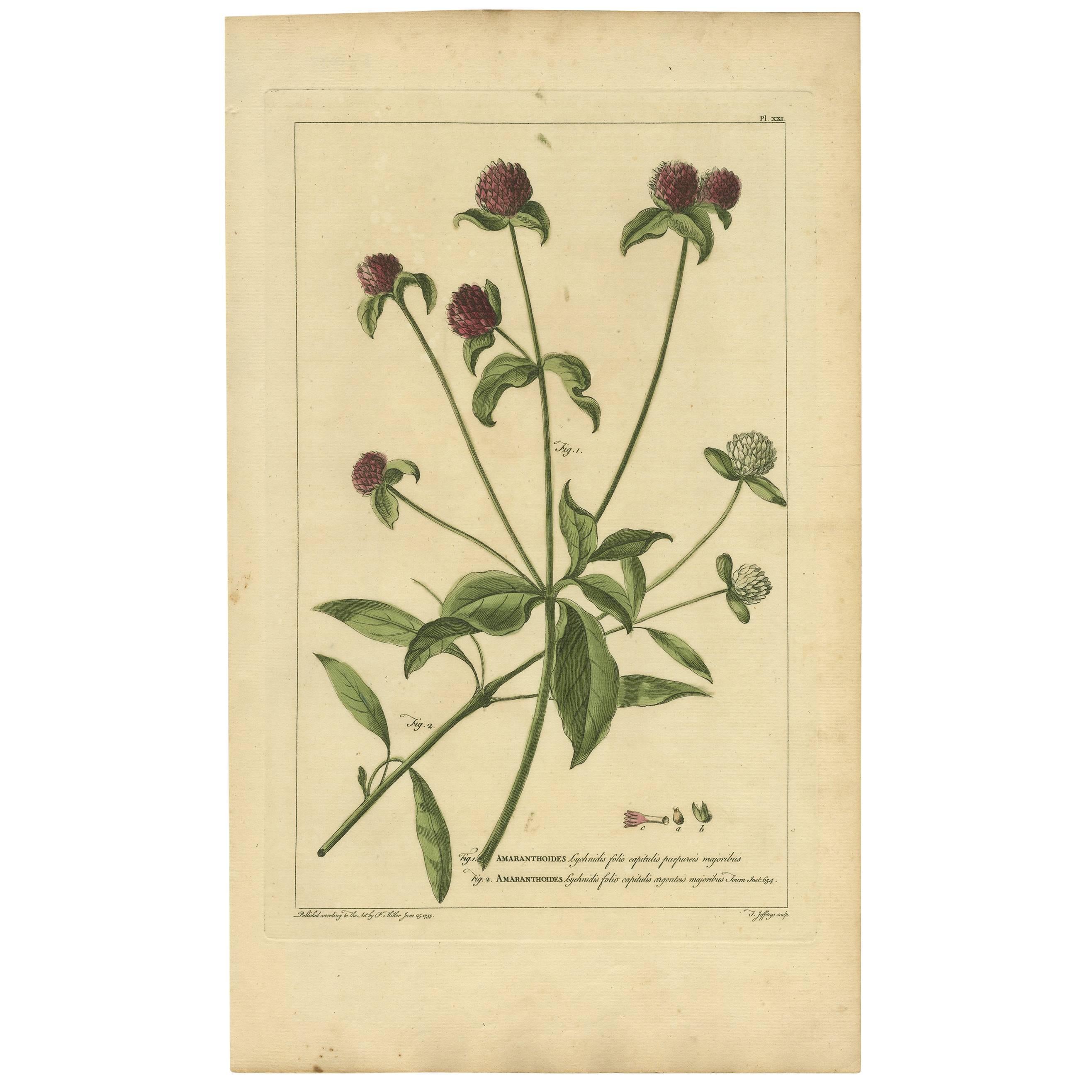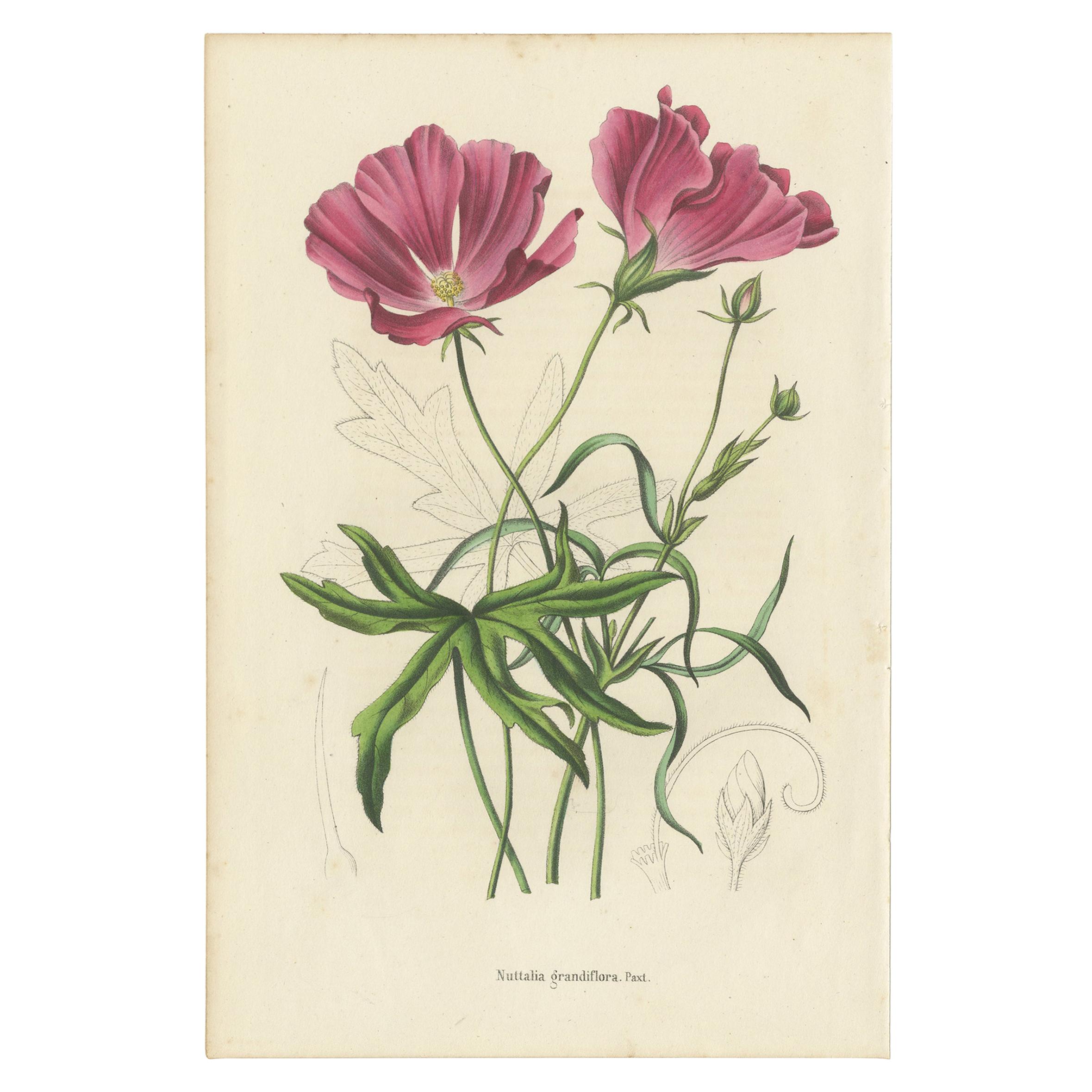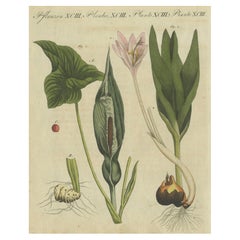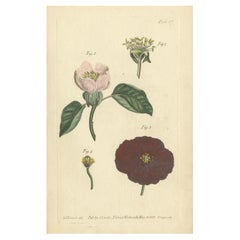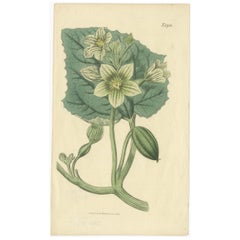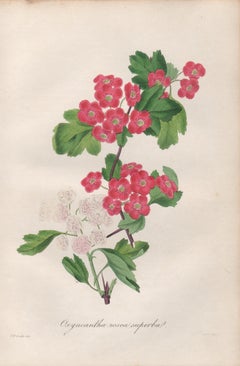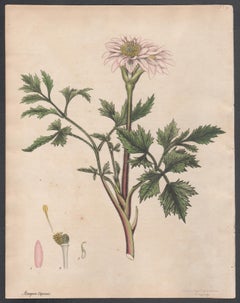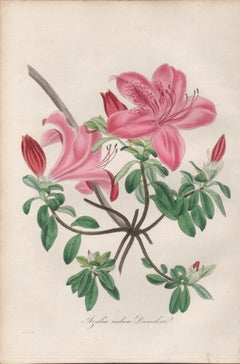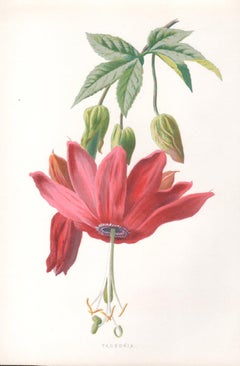Items Similar to Elegant Pink Quill in Full Bloom: An 18th Century Botanical Ilustration
Want more images or videos?
Request additional images or videos from the seller
1 of 11
Elegant Pink Quill in Full Bloom: An 18th Century Botanical Ilustration
$167.10
£124.69
€140
CA$233.02
A$255.36
CHF 133.35
MX$3,068.67
NOK 1,667.13
SEK 1,572.37
DKK 1,065.84
About the Item
This is a delicate botanical illustration of a Pink Quill, also known as Tillandsia cyanea. The flower is depicted in its typical form with a soft pink hue, prominently displaying its stamen and petals. The image is meticulously detailed, highlighting the intricate venation of the broad leaves and the graceful curve of the flower stem.
Significance and Details:
- Artist: Sydenham Edwards
- Publisher: William Curtis
- Published in: "Curtis's Botanical Magazine" around 1799.
- Special Characteristics: The pink quill is particularly known for its striking bract that resembles a quill and its bright, tubular flowers. It's a member of the bromeliad family and is admired for its unique inflorescence and vibrant color, which contrast beautifully against its green foliage. This plant is often grown as an ornamental plant due to its minimal soil requirements and striking appearance.
This illustration serves not only as a beautiful artistic work but also as an educational tool, providing detailed visual information about the morphology of the pink quill, making it a valuable piece for both botanical enthusiasts and collectors of historical botanical art.
The Pink Quill (Tillandsia cyanea) is special for several reasons that make it a fascinating subject in both botanical science and horticulture:
1. **Striking Appearance**: Its most distinctive feature is the bright pink bract, or quill, from which it derives its common name. This bract is vividly colored and visually striking, contrasting beautifully against the plant’s green foliage and the vibrant blue-purple flowers that emerge from the quill.
2. **Air Plant Characteristics**: As a member of the bromeliad family and specifically an epiphyte within the Tillandsia genus, the Pink Quill doesn’t require soil to grow. It absorbs moisture and nutrients through its leaves from the air, which makes it particularly adaptable and an excellent plant for indoor environments and modern decor.
3. **Ease of Care**: It is known for being low-maintenance, needing only moderate light and occasional watering, making it ideal for indoor settings and suitable for those new to gardening or who prefer less demanding plants.
4. **Flowering Longevity**: The pink bract remains vivid and attractive for several months, and the actual flowers last for a few days each, which can extend the visual appeal of the plant across a substantial period.
5. **Propagation**: After the main plant flowers, it will gradually die back, but not before producing offsets, or "pups," which can be separated and grown as new plants. This cycle of life adds an educational and engaging element to its cultivation.
These unique attributes contribute to its popularity and special status among plant enthusiasts and collectors.
- Dimensions:Height: 9.45 in (24 cm)Width: 6.3 in (16 cm)Depth: 0.01 in (0.2 mm)
- Materials and Techniques:
- Place of Origin:
- Period:1790-1799
- Date of Manufacture:Circa 1799
- Condition:The condition of this print is very good, with vibrant colors and clear details that have been well-preserved over time. General age-related toning and/or occasional minor defects from handling. Study scans carefully.
- Seller Location:Langweer, NL
- Reference Number:Seller: BG-13748-1051stDibs: LU3054341346692
About the Seller
5.0
Recognized Seller
These prestigious sellers are industry leaders and represent the highest echelon for item quality and design.
Platinum Seller
Premium sellers with a 4.7+ rating and 24-hour response times
Established in 2009
1stDibs seller since 2017
2,654 sales on 1stDibs
Typical response time: <1 hour
- ShippingRetrieving quote...Shipping from: Langweer, Netherlands
- Return Policy
Authenticity Guarantee
In the unlikely event there’s an issue with an item’s authenticity, contact us within 1 year for a full refund. DetailsMoney-Back Guarantee
If your item is not as described, is damaged in transit, or does not arrive, contact us within 7 days for a full refund. Details24-Hour Cancellation
You have a 24-hour grace period in which to reconsider your purchase, with no questions asked.Vetted Professional Sellers
Our world-class sellers must adhere to strict standards for service and quality, maintaining the integrity of our listings.Price-Match Guarantee
If you find that a seller listed the same item for a lower price elsewhere, we’ll match it.Trusted Global Delivery
Our best-in-class carrier network provides specialized shipping options worldwide, including custom delivery.More From This Seller
View AllElegant 1805 Hand-Colored Botanical Engraving of Bulbous Plants from Bertuch
Located in Langweer, NL
Title: Elegant 1805 Hand-Colored Botanical Engraving of Bulbous Plants from Bertuch
Description:
This detailed hand-colored botanical engraving is taken from Friedrich Justin Be...
Category
Antique Early 1800s Prints
Materials
Paper
Antique Botanical Engraving of Apple Blossom and Mallow - 1803 Floral Print
Located in Langweer, NL
Antique Botanical Engraving of Apple Blossom and Mallow - 1803 Floral Print by Samuel Curtis
This engraving is from "The Botanical Magazin...
Category
Antique Early 1800s Prints
Materials
Paper
$133 Sale Price
20% Off
Antique Botany Print of Ecballium Elaterium by Curtis, 1817
Located in Langweer, NL
Antique botany print of Ecballium Elaterium, also known as the squirting cucumber or exploding cucumber. It gets its unusual name from the fact that, when ripe, it squirts a stream o...
Category
Antique 19th Century Prints
Materials
Paper
$81 Sale Price
20% Off
Antique Botanical Flower Print of Spigelia Marilandica or Indian Pink, ca.1821
Located in Langweer, NL
Antique botanical print titled 'MSpigélie du Maryland'. This print shows the Spigelia Marilandica, also known as the Indian pink or woodland pinkroot. It is a herbacious perennial wi...
Category
Antique Mid-19th Century Prints
Materials
Paper
$162 Sale Price
20% Off
Free Shipping
Antique Flower Print 'Amaranthoides' , 1755
Located in Langweer, NL
Plate XXI 'Amaranthoides', originates from 'Figures of the most beautiful, useful and uncommon plants described in the Gardener's Dictionary (..)' by P. Miller.
Philip Miller was the principal horticulturalist in England in the mid-18th century. As the curator of the Chelsea Physic Garden and an active member of the Society of Gardeners, he had the opportunity to interact with important naturalists as well as some of the best botanical artists of the period including Georg Ehret and Robert Furber...
Category
Antique Mid-18th Century English Prints
Materials
Paper
Antique Botany Print of the Large-Flowered Nuttalia, 1847
Located in Langweer, NL
Antique print titled 'Nuttalia Grandiflora'. Botany print of the large-flowered nuttalia. This print originates from volume 3 of 'Annales de la Société Royale d'Agriculture et de Bot...
Category
Antique Mid-19th Century Prints
Materials
Paper
$95 Sale Price
20% Off
You May Also Like
Oxyacantha rosea superba, antique botanical pink flower engraving
Located in Melbourne, Victoria
Engraving with original hand-colouring. 1834. 230mm by 155mm. From Paxton's 'Magazine of botany and register of flowering plants' by Sir Joseph Paxton.
Category
Mid-19th Century Naturalistic More Prints
Materials
Engraving
Cape Atragene, Henry Andrews antique botanical pink flower engraving print
By Henry C Andrews
Located in Melbourne, Victoria
'Atragene Capensis - Cape Atragene'
Native of the Cape of Good Hope.
Original copper-line engraving with original hand-colouring from Henry Andrews' 'The Botanist's Repository', 1...
Category
Early 19th Century Naturalistic Still-life Prints
Materials
Engraving
Azalea indica danielsiana, antique botanical pink flower engraving
Located in Melbourne, Victoria
Engraving with original hand-colouring. 1834. 230mm by 155mm. From Paxton's 'Magazine of botany and register of flowering plants' by Sir Joseph Paxton.
Category
Mid-19th Century Naturalistic More Prints
Materials
Engraving
Tacsonia, English antique pink flower botanical chromolithograph, 1895
By Frederick William Hulme
Located in Melbourne, Victoria
'Tacsonia'
Process print from Frederick William Hulme’s ‘Familiar Wild Flowers’, circa 1890.
Hulme was known as a teacher and an amateur botanist. He was the Professor of Freehand ...
Category
Late 19th Century Naturalistic Still-life Prints
Materials
Lithograph
Large Pair of Original Antique Botanical Prints, Dated 1838
Located in St Annes, Lancashire
Wonderful pair of botanical prints.
Lithographs by Alfred Adlard
After C.W Harrison
Original hand color
Published, 1838
Unframed.
The me...
Category
Antique 1830s English Chinoiserie Prints
Materials
Paper
Flowering Cotton Plant: 18th Century Hand-colored Weinmann Botanical Engraving
By Johann Wilhelm Weinmann
Located in Alamo, CA
This striking hand-colored botanical mezzotint and line engraving is entitled "Gnaphalium, Gossypium (Cotton Plant)". It is plate 551 in Johann Weinmann's monumental publication "Phy...
Category
Mid-18th Century Naturalistic Still-life Prints
Materials
Engraving, Mezzotint
